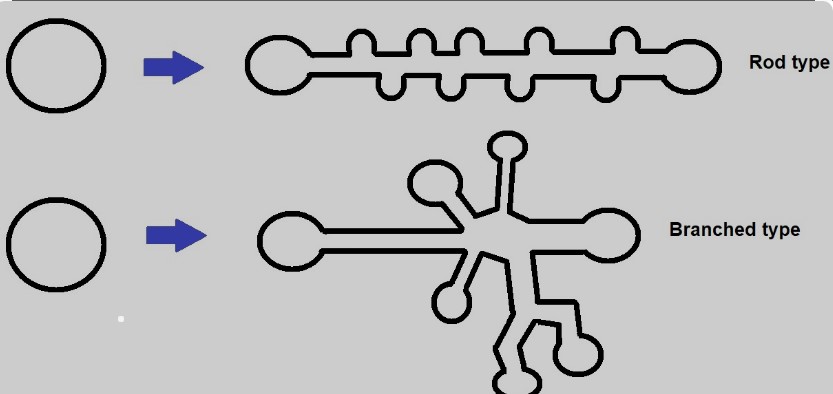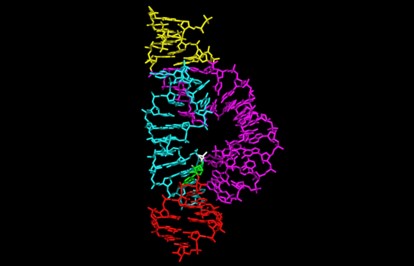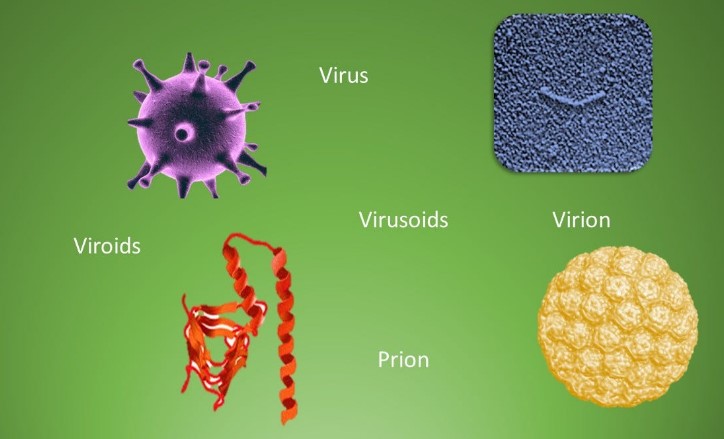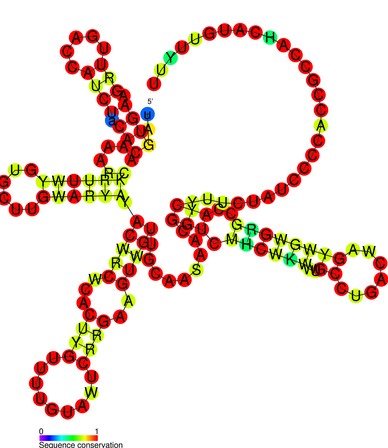In the realm of microscopic entities that influence biological systems, viroids and virusoids represent some of the most intriguing subjects. These particles, though often overshadowed by their more complex viral counterparts, play critical roles in the study of molecular biology, genetics, and plant pathology. Their discovery has not only expanded our understanding of infectious diseases but also challenged conventional views on the nature of life.
Viroids and virusoids are both infectious agents, but they differ significantly in their composition and mode of action. Viroids are small, circular RNA molecules that infect plants, causing various diseases. Virusoids, on the other hand, are also RNA molecules but require a helper virus to infect cells, acting as subviral particles. This fundamental difference marks a significant distinction in how they interact with host organisms and spread within populations.
The significance of studying viroids and virusoids extends beyond academic curiosity. It sheds light on the evolutionary origins of viral particles, offers insights into the mechanisms of infection and disease, and has implications for biotechnology and agriculture. Understanding these agents not only helps in developing strategies for disease control and prevention but also contributes to the broader field of molecular biology and genetics.

Basic Definitions
Viroids
Simple Description
Viroids are tiny infectious particles that consist solely of a short strand of circular, single-stranded RNA without any protein coat. They are unique because they are the smallest known pathogens capable of causing disease, specifically in plants. Despite their simplicity, viroids are efficient in their infection process, showcasing the complexity of life at its most minimalistic form.
Biological Significance
The biological significance of viroids extends beyond their role as plant pathogens. They challenge our understanding of what is necessary for an infectious agent to function and replicate. Viroids have contributed to significant agricultural losses, infecting a wide range of crops. Their study has also provided insights into RNA silencing, a critical process in genetic regulation and defense mechanisms in eukaryotic organisms, including humans.
Virusoids
Simple Description
Virusoids, like viroids, are composed of RNA. However, they cannot replicate on their own and must rely on a helper virus for replication and packaging. Virusoids are found as part of the satellite RNA within the virus particles and play a role in the infection process. They represent a fascinating example of the interdependence between different infectious agents.
Biological Significance
The presence of virusoids has implications for understanding viral pathogenesis and evolution. They highlight the complexity of viral interactions and the potential for co-evolution between different types of infectious entities. Furthermore, studying virusoids can lead to the discovery of novel viral life cycles and mechanisms of genetic regulation.
Structural Differences
Genetic Material
Type and Size
Viroids are composed entirely of RNA, which is usually about 246 to 467 nucleotides long. This RNA is not translated into protein; instead, it interferes with the host plant’s genetic regulation. Virusoids also consist of RNA but are usually smaller, associated with larger RNA molecules of their helper viruses, and their sequences can be crucial for the replication of the helper virus itself.
Structural Organization
The RNA in viroids is typically circular and single-stranded, forming a highly base-paired, rod-like structure. This compact structure is crucial for their stability and function within host cells. Virusoids, while also single-stranded, often have a more linear or quasi-circular structure and require encapsulation within the helper virus for stability and function.
Capsid Presence
Explanation of Capsid
A capsid is the protein shell that encases the genetic material of viruses. It protects the viral genome and assists in its delivery into host cells. Capsids are composed of protein units called capsomeres and can vary in shape and complexity.
Viroid and Virusoid Comparison
Viroids do not have a capsid or any protein coating; their RNA is naked. This absence of a protective protein shell is one reason why viroids are limited to plant hosts, where cell-to-cell movement is less restricted. In contrast, virusoids, while also lacking their own capsids, are encapsulated within the capsids of their helper viruses. This encapsulation is necessary for their stability, dissemination, and infection process.

Mode of Replication
Viroids
Replication Process
Viroids replicate in a unique manner that doesn’t involve the synthesis of proteins. Their replication takes place in the nucleus or chloroplasts of the host plant cells through a process called rolling circle replication. This method produces a multimeric RNA intermediate, which is then cleaved into unit-length viroids by host enzymes.
Host Involvement
The replication process of viroids is highly dependent on the host’s cellular machinery. It utilizes the host’s RNA polymerase for the synthesis of new RNA strands, showcasing a sophisticated form of parasitism where the infectious agent hijacks the host’s biological processes for its propagation.
Virusoids
Replication Process
Virusoids rely on the replication machinery of their helper viruses. They are packaged within the helper virus particles and replicate alongside the helper virus’s genome. The replication of virusoids typically occurs in the cytoplasm of the host cell, following the entry facilitated by the helper virus.
Dependency on Helper Viruses
The life cycle of virusoids is intrinsically linked to that of their helper viruses. Without the helper virus, virusoids cannot replicate or spread to new cells. This dependency underlines the complex interactions and co-evolutionary relationships between different types of infectious agents and their hosts.

Pathogenicity
Impact on Plants
Viroid Diseases
Viroids are notorious for causing a range of diseases in plants, leading to symptoms such as stunting, leaf mottling, color breaking, and even death. Some well-known diseases include Potato Spindle Tuber Disease, Citrus Exocortis, and Apple Scar Skin Disease. These diseases not only affect the health and yield of the plants but also have a direct impact on the quality of the produce, rendering them unsellable or significantly decreasing their market value.
Economic Significance
The economic significance of viroid-induced diseases cannot be understated. For instance, the Potato Spindle Tuber Viroid has led to considerable losses in potato yields worldwide. The agriculture industry, particularly in countries where farming acts as a backbone to the economy, suffers greatly. Losses encompass not just the immediate crop damage but also long-term implications for soil health and subsequent planting seasons.
Impact on Animals
Virusoid Involvement
Virusoids, while primarily associated with plant diseases through their helper viruses, have a complex role in animal infections. Their existence within certain virus particles can influence the pathogenicity and disease outcomes in animal hosts, although direct infections by virusoids in animals are not documented.
Examples of Diseases
An example of disease indirectly related to virusoids involves the Hepatitis Delta Virus (HDV), which, while not a virusoid, shares similarities in its dependence on a helper virus (Hepatitis B Virus) for its replication and pathogenicity in humans. This showcases the potential for complex interactions between different infectious agents in causing diseases.
Transmission Methods
Viroids
Plant to Plant
Transmission of viroids can occur through several means, including contact between plants, grafting, and seed transmission in some cases. The mechanical transfer via tools and equipment used in agriculture can also spread viroids from infected to healthy plants, highlighting the importance of sanitation in preventing disease spread.
Human Activities and Tools
Human activities, notably agriculture practices such as pruning, grafting, and harvesting, play a significant role in the transmission of viroids. The use of contaminated tools and equipment can easily introduce viroids into wounds or openings in plants, facilitating the infection process.
Virusoids
Role of Helper Viruses
Virusoids depend on their helper viruses for transmission. The helper virus facilitates the entry, replication, and spread of the virusoid within the host. This relationship is critical for the virusoid’s lifecycle and its ability to infect new hosts.
Animal Vectors
The transmission of virusoids, via their helper viruses, often involves vectors. These vectors can be insects, such as bees and aphids, that feed on the infected plants and then carry the virus to healthy ones. The interaction between virusoids, their helper viruses, and vectors is a complex ecological relationship that enables the widespread dissemination of these infectious agents.
Detection and Diagnosis
Techniques Used
The detection and diagnosis of viroids and virusoids involve sophisticated molecular techniques, including Polymerase Chain Reaction (PCR), Reverse Transcription PCR (RT-PCR), and Nucleic Acid Sequencing. These methods allow for the specific and sensitive identification of the infectious agents, even at low concentrations.
Challenges in Identification
One of the main challenges in the identification of viroids and virusoids is their small size and high sequence variability. This can make it difficult to design primers for PCR and to interpret sequence data. Additionally, the presence of similar symptoms caused by different pathogens can complicate the diagnostic process.
Treatment and Control
Viroids
Preventive Measures
Preventive measures against viroids include crop rotation, use of certified disease-free seeds and plants, and strict sanitation practices in agricultural settings. These practices are essential in minimizing the spread and impact of viroids.
Current Research
Current research is focused on developing resistant plant varieties through genetic engineering and exploring RNA interference (RNAi) techniques to silence the expression of viroid genomes, offering promising avenues for controlling these pathogens.
Virusoids
Preventive Measures
For virusoids, prevention largely involves controlling the helper viruses through the use of vaccines (in applicable cases) and vector control measures. Maintaining plant health and monitoring for signs of infection can also reduce the risk of disease.
Role of Antiviral Drugs
Research into antiviral drugs that can target helper viruses effectively reduces the replication and spread of virusoids. However, this area is complex due to the need to avoid harming the host while inhibiting the virus.
Frequently Asked Questions
What are Viroids?
Viroids are the smallest known infectious agents, composed entirely of a short strand of circular RNA without any protein coating. They are known to infect plants, leading to a variety of diseases that can cause significant agricultural losses.
How do Virusoids Differ from Viroids?
Unlike viroids, virusoids cannot replicate independently and require the presence of a helper virus to replicate and cause infection. Virusoids are also made of RNA, but their existence and function are closely tied to the life cycle of their associated helper viruses.
Can Viroids Infect Humans?
Currently, there is no evidence to suggest that viroids can infect humans. Their pathogenicity is primarily limited to plants, where they can cause diseases affecting a wide range of crops and ornamental plants.
How are Viroids and Virusoids Detected?
The detection of viroids and virusoids involves sophisticated molecular techniques, including polymerase chain reaction (PCR), nucleic acid sequencing, and hybridization methods. These techniques allow for the precise identification and characterization of these infectious agents.
Conclusion
The exploration of viroids and virusoids illuminates a fascinating aspect of the microbial world, underscoring the diversity and complexity of life at its most fundamental level. Their study not only advances our understanding of infectious diseases and host-pathogen interactions but also opens up new avenues for research and application in agriculture and medicine. As we continue to unravel the mysteries surrounding these entities, their significance in the broader context of biology and evolution becomes ever more apparent.
In a world increasingly focused on the microscopic, the distinction between viroids and virusoids offers a unique perspective on the intricacies of life and the ongoing battle against infectious diseases. By deepening our knowledge of these particles, we equip ourselves with the tools to develop more effective strategies for disease management and prevention, ensuring the sustainability of our agricultural practices and the health of our ecosystems.

